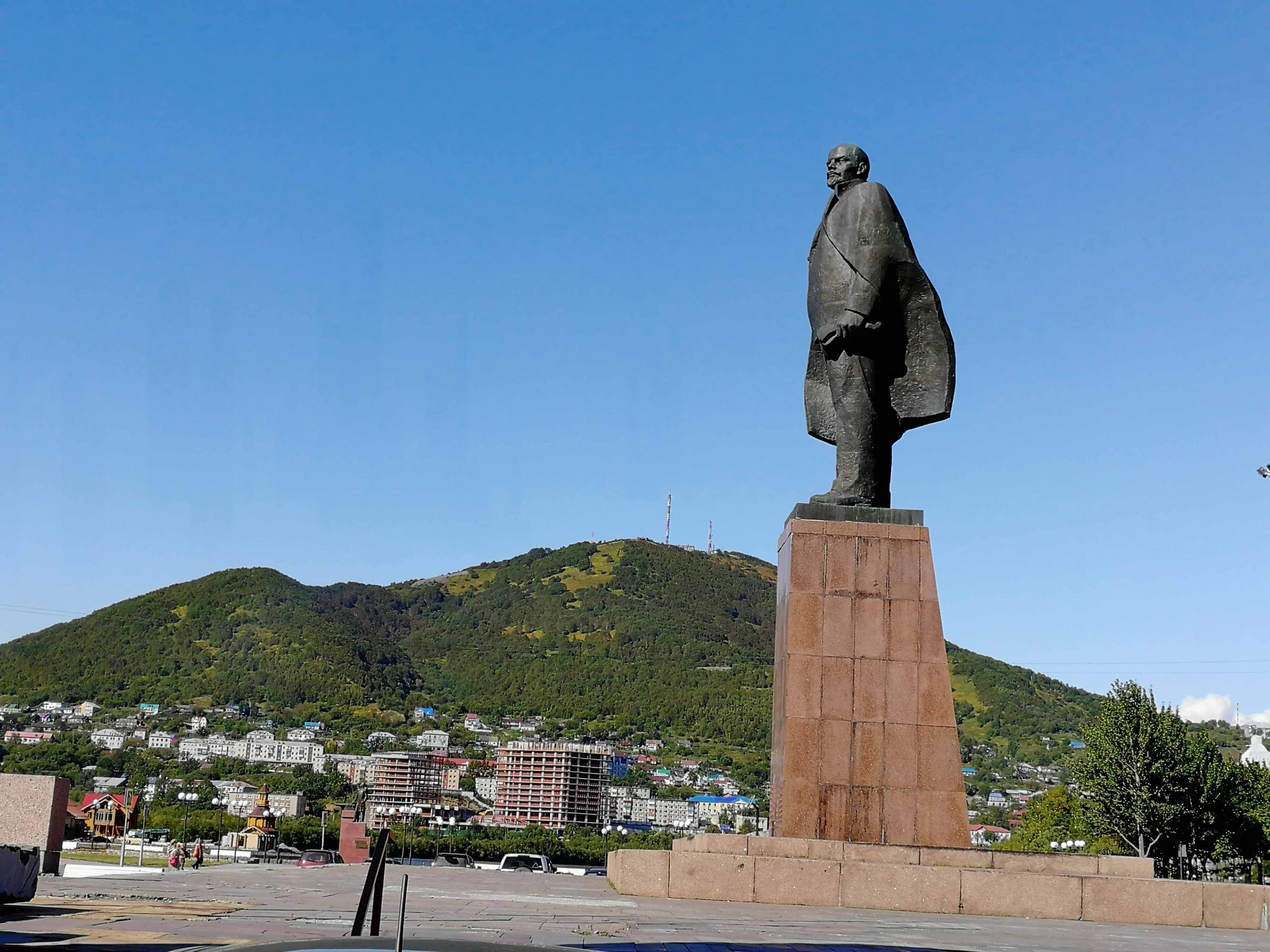
Petropavlovsk-Kamchatsky is administrative center of the Kamchatka Territory located at the Avacha Bay of the Pacific Ocean not far from two active volcanoes: the Koryakskaya Sopka and the Avacha Volcano. City was founded in 1740 by Russian navigator (Danish in origin) Vitus Jonassen Bering during the Great Northern Expedition (1733-1743) and named after two ships of the expedition: “St. Peter” and “St. Paul”. In XVIII-XIX cc. city was visited by expeditions of many famous navigators: Jean François de Lapérouse, Charles Clerke who headed James Cook’s expedition after his death at the Hawaiian Islands, the first Russian circumnavigation of the Earth headed by Adam Johann von Krusenstern etc.. During the Crimean War (1853-1856) small garrison of Petropavlovsk-Kamchatsky successfully repulsed an attack of the British and French forces. Now Petropavlovsk-Kamchatsky is a large center of Russian Far East and one of the Russian Pacific Navy bases. During 3-4-hour Petropavlovsk-Kamchatsky city sightseeing tour you will visit monuments to Vitus Jonassen Bering and Jean François de Lapérouse, grave of Charles Clerke, the Glory Monument and the Third Battery Monument erected to commemorate the heroic defense of the city during the Crimean War, bed of honor of Russian, British and French soldiers, wooden houses of the early XX c., former governor’s house, picturesque souvenir and fish market.
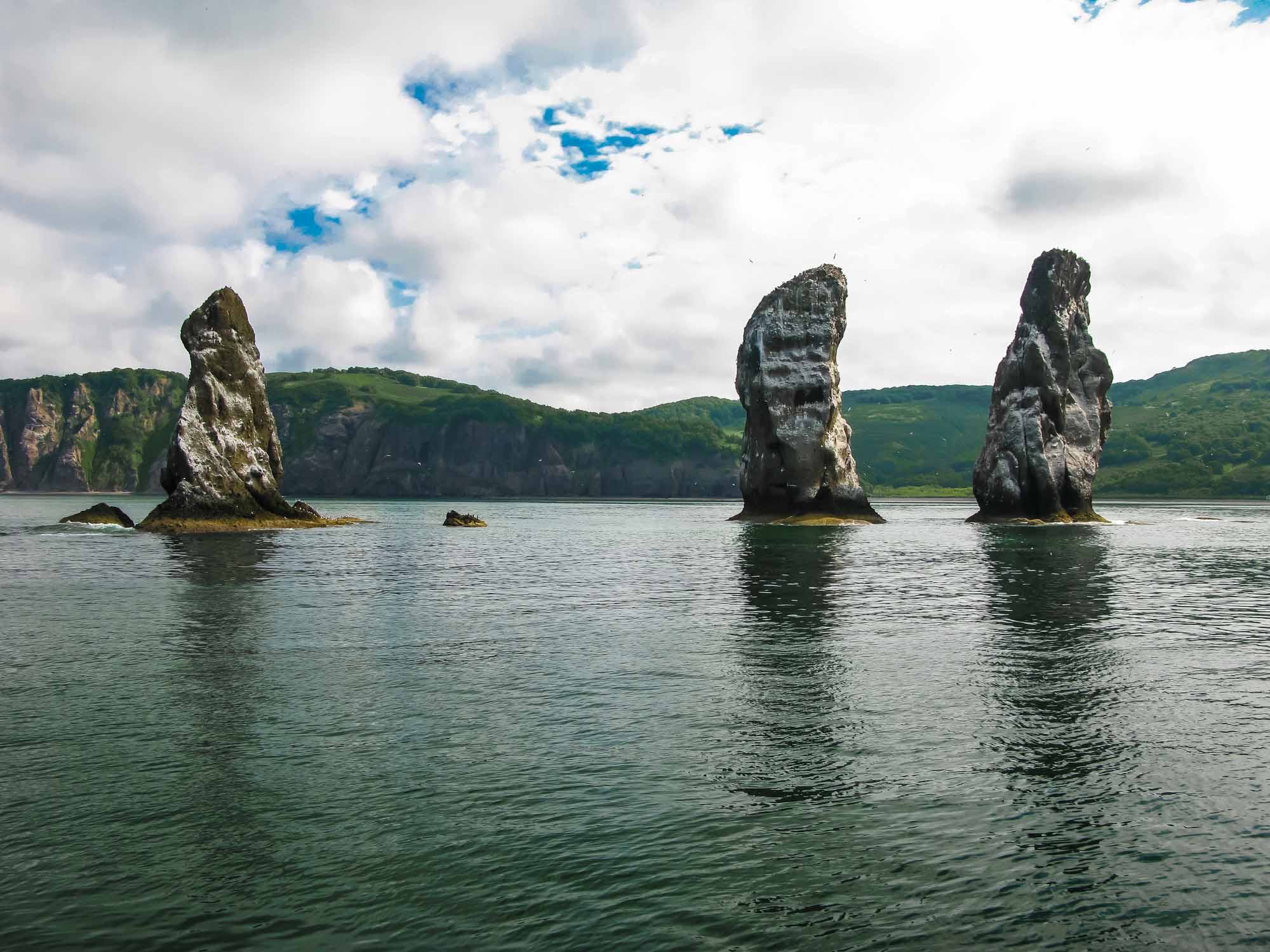
Petropavlovsk-Kamchatsky is located at the Avacha Bay of the Pacific Ocean, one of the largest bays in the world. Motor boat trip offered will make you feel a rugged beauty of the North Pacific. We offer you to take part in 5-6-hour Avacha Bay fixed date motor boat tour. You will see seabird nesting at the Babushkin Kamen (Grandmother’s Stone) Island and the symbol of the Avacha Bay — Three Brothers Cliffs located at the gateway to the Avacha Gulf from the bay. Traveling through the Avacha Gulf you will reach the Island Starichkov where you can watch the largest in Kamchatka colony of sea birds (the Starik is Russian name of the bird Synthliboramphus antiquus or the Ancient murrelet) including the Steller sea eagle, one of the most large (its wingspan is about 2.5 m) and nice birds in the world described first by Georg Wilhelm Steller, German physician and naturalist, participant of the Great Northern Expedition (1733-1743) by Vitus Jonassen Bering. You have a chance to meet dolphins, Steller sea lions, killer whales here. Sea fishing is possible.
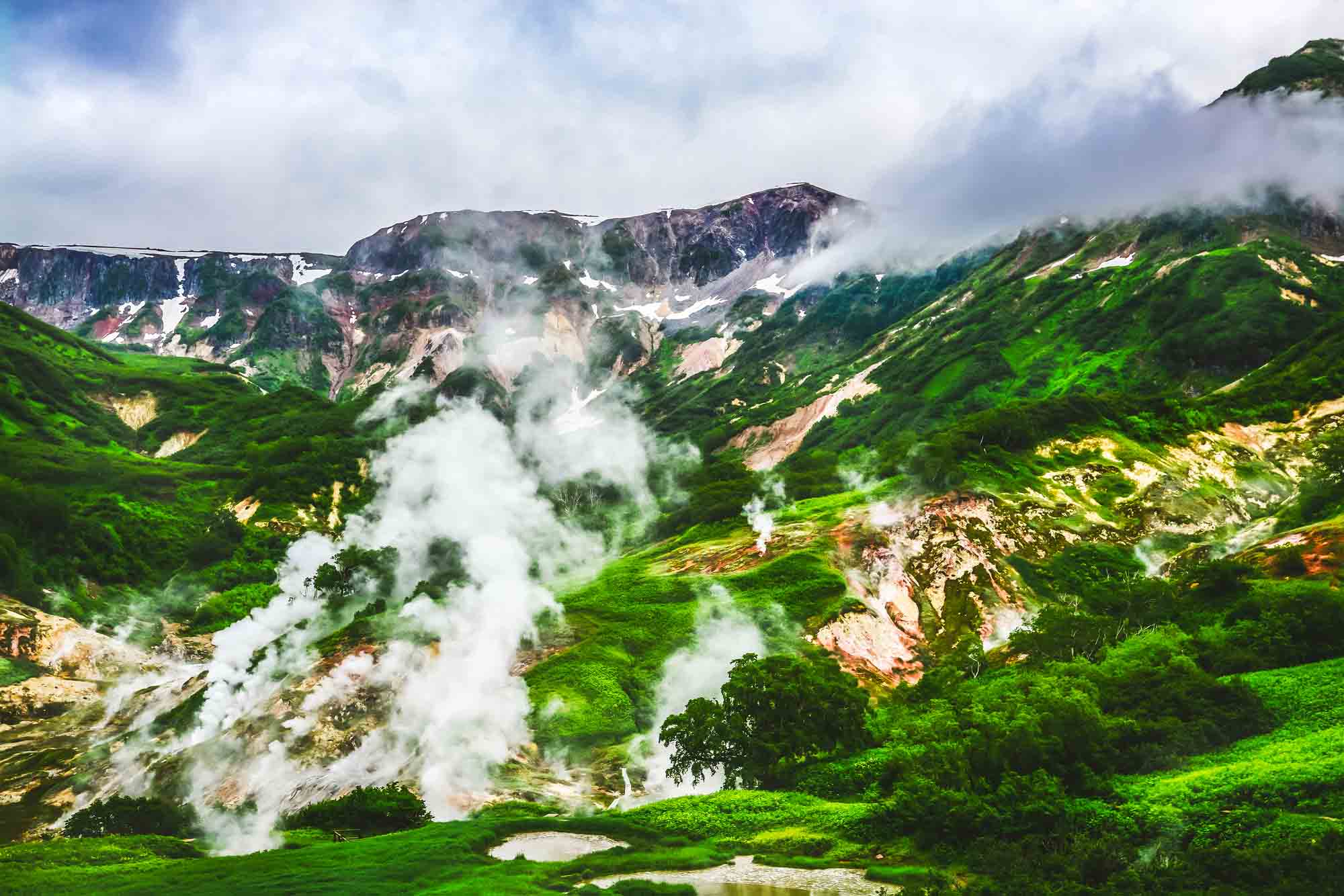
The Valley of Geysers known since 1941 and located on the territory of the Kronotsky Nature Reserve is one of the largest geyser fields in the world and the only one in Eurasia. The Valley of Geysers is a deep canyon of the Geyser River not far from the place of its flowing into the Shumnaya (the Noisy) River with numerous geysers, hot springs, mud volcanoes, water-falls and lakes. There is anomaly high biodiversity and microclimatic contrasts in the quite small territory (about 6 sq. km). Since 1993 helicopter tours are arranged to the Valley of Geysers by travel companies (in 1977-1992 tourism was completely forbidden here) but visiting of this place included to the UNESCO World Heritage List with a unique ecosystem is still strictly limited.
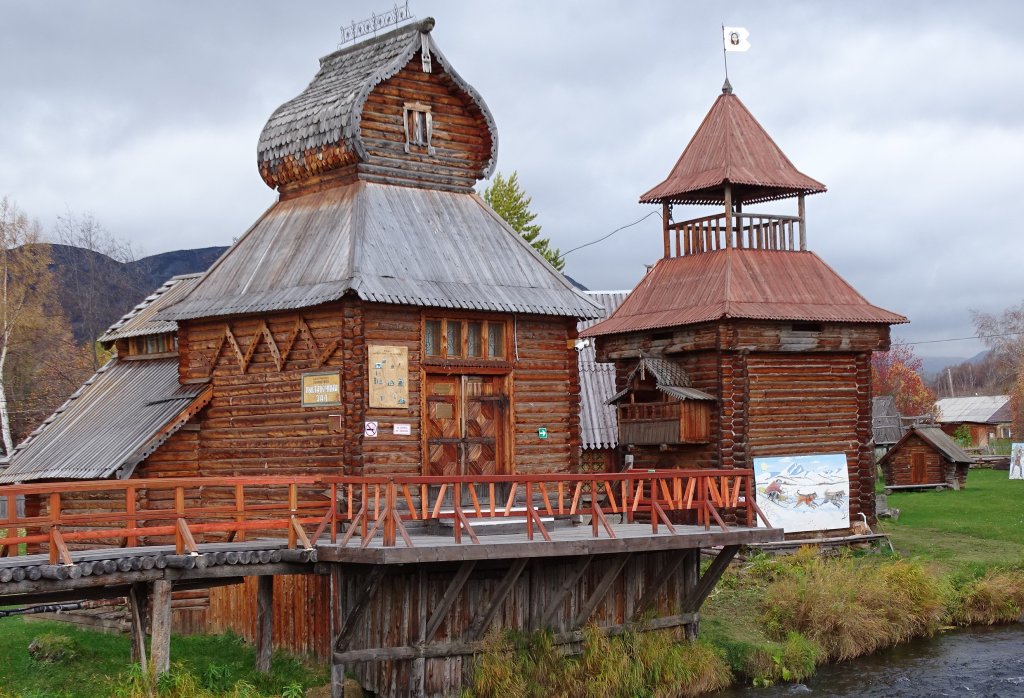
Esso settlement (580 km from Petropavlovsk-Kamchatsky) located on the Bystraya (the Quick) River bank is one of the most popular tourist attractions in Kamchatka presenting local aboriginals mode of life. Here you can visit the Local Ethnographic Museum complex and crafts workshops of the indigenous peoples of Kamchatka (bone carving, wood carving, beads, making of shamanic drums). For those who wish (optionally) horse riding, rafting, hiking are offered. Helicopter tour to herders is also possible. En route from Petropavlovsk-Kamchatsky to Esso tourists usually have a stop at the Malkinskie hot springs (bathing is recommended) and also a stop for lunch at village Milkovo.
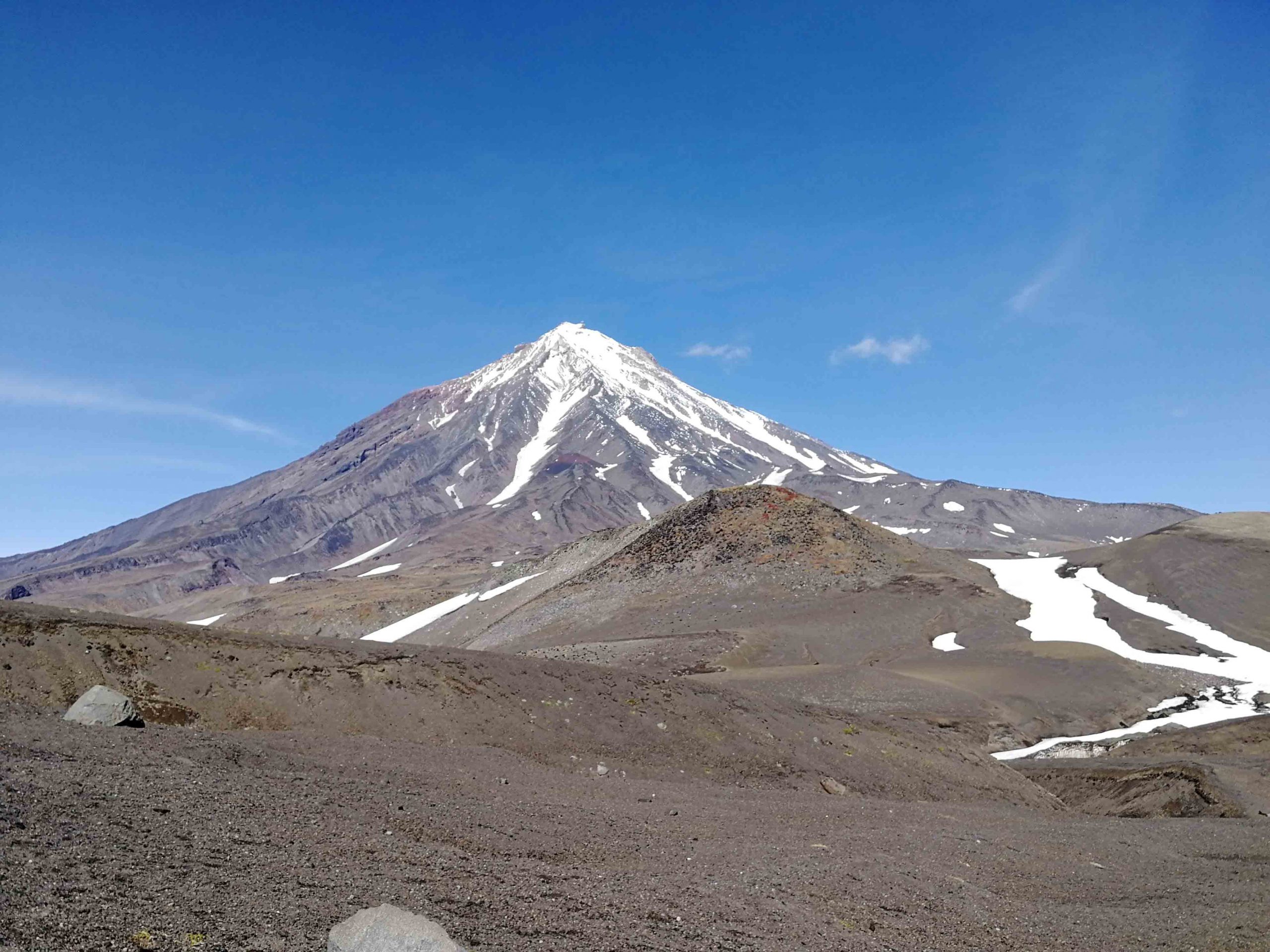
Volcanoes are the main tourist attraction of Kamchatka, its symbol and insignia of the Kamchatka Territory. There are about 300 volcanoes here and about 30 of them are considered active. The first group is formed with two nearest to Petropavlovsk-Kamchatsky (45 km) active volcanoes: the Koryakskaya Sopka and the Avacha. During 6-8-hour tour you will get to the foot of both volcanoes. Tourists are transfered by all terrain vehicle to the mountain plateau between the volcanoes Avacha and Koryakskaya Sopka (45 km) and hike to the picturesque Camel Hill and along the offshoots of the Koryakskaya Sopka and Avacha volcanoes (2-3 hours). Tourists have a chance to photograph fantastic mountainous landscapes, wonderful mountain flowers and colony of very sociable and funny Arctic ground squirrels (local name — evrazhka).

The second group of volcanoes is presented by three volcanoes: the Vilyuchinsky, the Gorely and the Mutnovsky, one of the most picturesque places of Kamchatka. Full day tour from Petropavlovsk-Kamchatsky is arranged there. Tourists are brought by vehicle through the plateau of the Viluchinsky and the Gorely volcanoes to the foot of the volcano Mutnovsky (110 km) and go by walk (2.5 km) to the famous Dachnye hot springs (considered «Small Valley of Geysers»). On the way you can visit Verkhneparatunskiye hot springs and the Vilyuchinsky waterfall. Booking fixed date active tour you receive an opportunity of ascent to the Gorely Volcano (1829 m) and to the crater of the Mutnovsky Volcano (2323 m). Going to the Gorely Volcano peak through hardened lava and slag fields you will see three craters with little lakes. The crater of the Mutnovsky Volcano is one of the most clear volcanic phenomenons of Kamchatka. Steep walls surround wide and deep crater basin with glittering glaciers broken by cracks and boiling fumaroles.
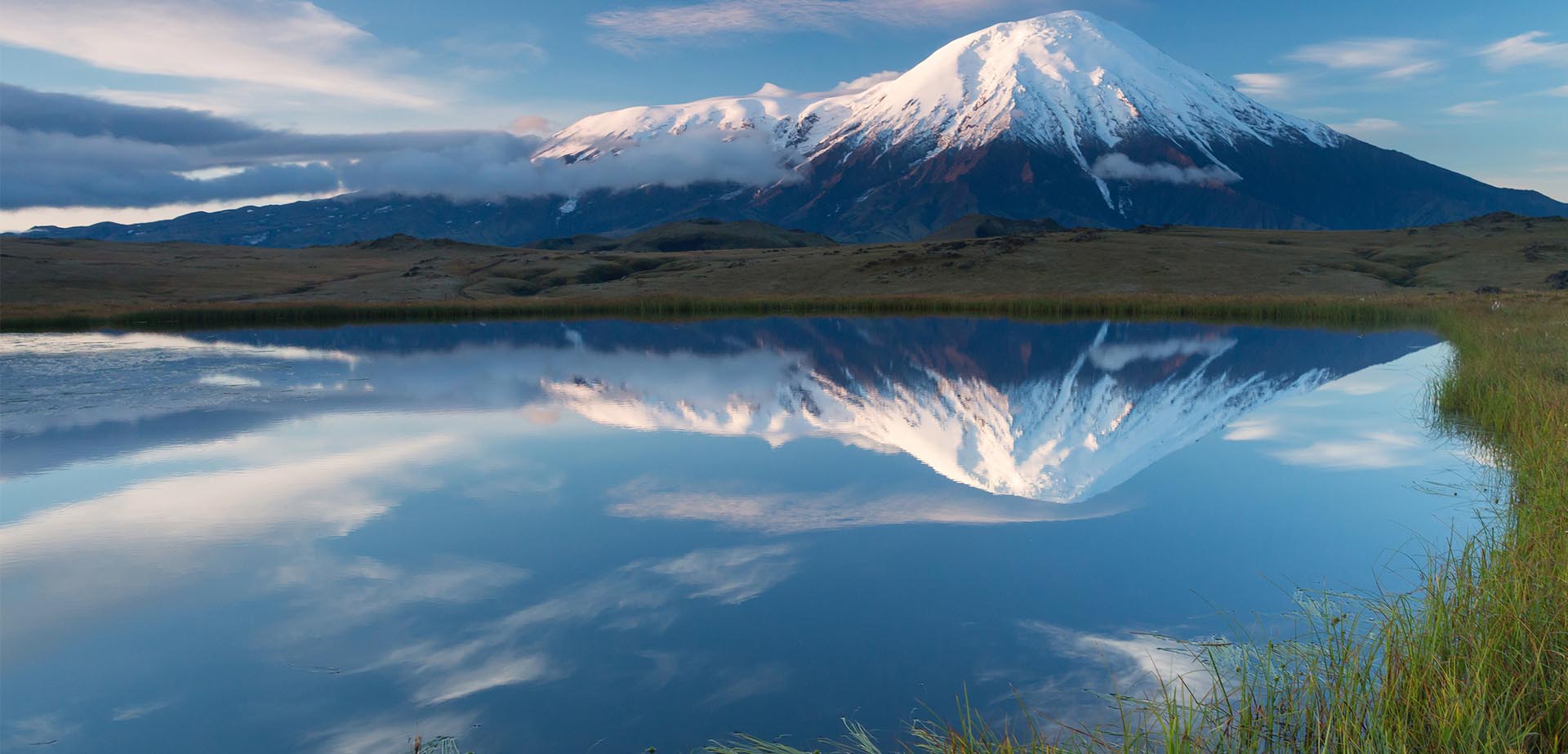
The third group of volcanoes is located in the central part of Kamchatka the Klychevskaya Volcano Group. This group including the largest volcanoes of Eurasia is one of the most interesting tourist attractions in Kamchatka. Participants of fixed date active tours reach picturesque volcanic massif formed with the Plosky Tolbachik and the Ostry Tolbachik volcanoes by all terrain vehicle from Malki settlement (460 km) with stop for lunch at Milkovo village. If weather is favourable during this transfer you can see fantastic panorama of the highest volcanoes of Kamchatka (the Krestovsky, the Ushkovsky, the Klyuchevskoy, the Kamen (the Stone), the Plosky (the Flat) Tolbachik and the Ostry (the Sharp) Tolbachik). You will have a chance to see here the most interesting objects connected with the eruption of the Tolbachinsky Volcano (2013): «young» cone, vast lava fields, caves formed on the place of lava canals etc.. You will be able to ascend the volcanic cones (miniature volcanoes of about 100-300 m high) created as the result of the North and the South Breaks during the crack-type eruption of 1975-1976. You will walk through the Dead Forest destroyed during the slag and ashes eruption of the vast territory.
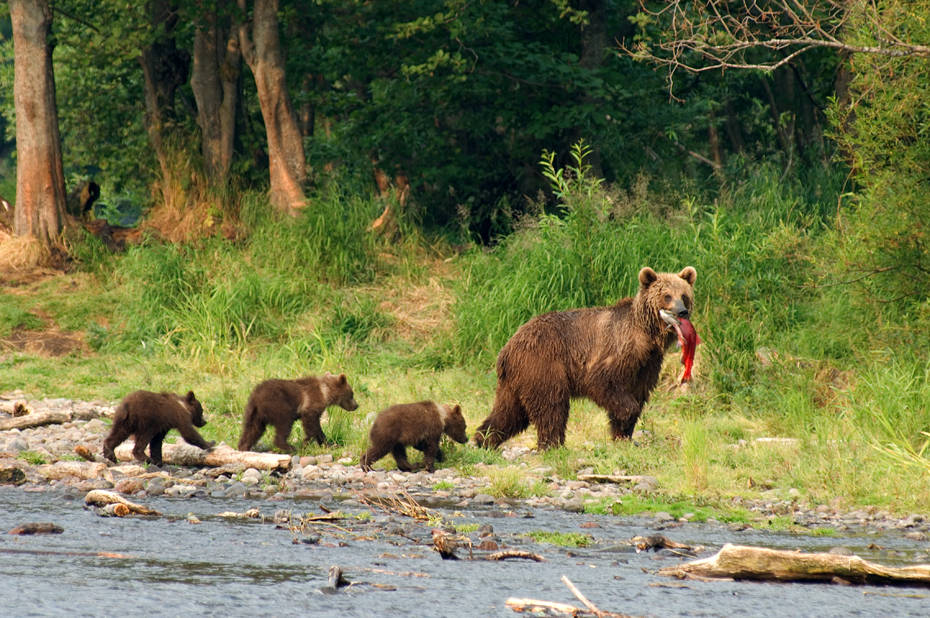
Wild nature of the Kamchatka Peninsula is practically untouched. That’s why you have unique watch chance to watch many species of wild animals in their natural habitat. The best place for watching of local wild fauna of Kamchatka is the Dvukhyurtochnoye Lake. This lake completely surrounded by rocky mountains is one of the largest spawning water basins of the Kamchatka Peninsula. Every year about 120-150 thousand individuals of the Sockeye salmon (Oncorhynchus nerka) come here to spawn and about 500 brown bears go to the shores of the lake and its tributaries for fishing and feeding before the winter hibernation. Here you can watch the real bear fishing. You have a chance to watch also Steller’s sea eagle, otters, foxes and mink also coming to the lake and to the nearest streams to feed on fish. This is a great place for photography and effective salmon fishing. This is possible to reach the Dvukhyurtochnoye Lake by helicopter from Esso settlement). During your 60-minute flight if weather is favourable you can see fantastic panorama of the Klychevskaya Volcano Group, the largest in Kamchatka, the Shiveluch volcano and the Alnei-Chashakondzha volcanic massif. Local tourist center «Dvukhyurtochnoye» consists of six residential wooden houses with double rooms and a large kitchen and dining room. Outdoor facilities. There is very good bath with the thermal waters available round the clock. The base is located at the foot side of valley on a huge thermal field with numerous mud volcanoes and hot springs.

Kozyrevsk is original hunters, fishermen and wood-cutters settlement located on the bank of the Kamchatka River mouth (492 km to the north from Petropavlovsk-Kamchatsky). You have a chance to be acquainted with contemporary Kamchatka inhabitants mode of life here.

Paratunka village located at the upper reaches of the Paratunka River (70 km to the south-west from Petropavlovsk-Kamchatsky) is the largest and the most known thermal resort of Kamchatka. Dwellings of the locals are heated directly with ground thermal water without heating plant. In 1967 the first in the world geothermal electricity was arranged here. You still can see its ruins not far from Paratunka. Kamchatka aboriginals knew local hot springs very long ago but they didn’t visited this place because they believed that this springs are refuge of wicked spirits. In 1805 hot springs of Paratunka were described by naturalist of German nativity Georg Heinrich von Langsdorff, participant of Russian scientific circumnavigation expedition headed by Adam Johann (Ivan Fedorovich) von Krusenstern. In the mid-XIX c. baths with changing rooms were equipt. Thanks to an abundance of therapeutic mud and thermal water more than 30 hotels, tourist centers and sanatoria were built here.
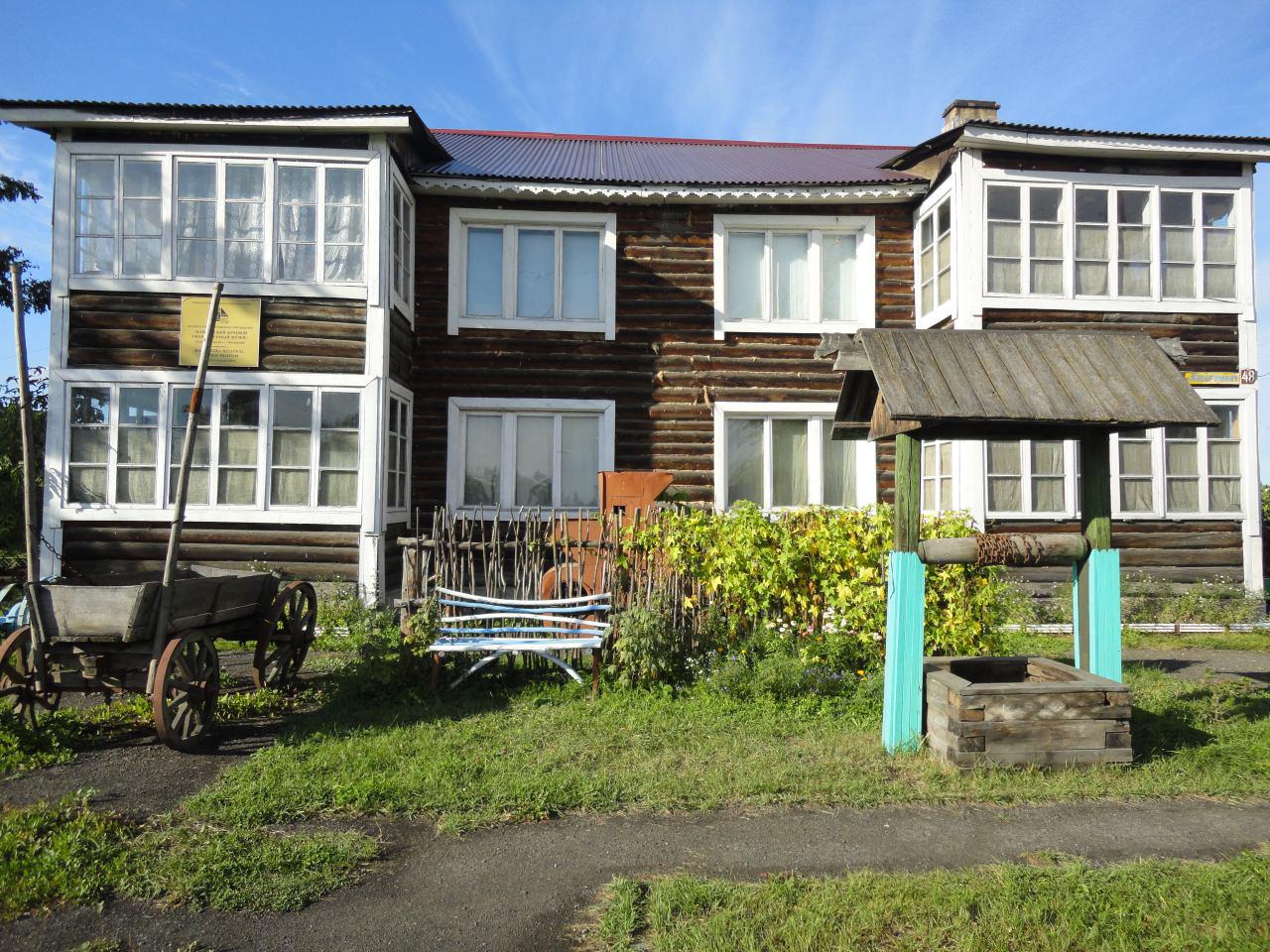
Milkovo village is located at the upper reaches of the Kamchatka River. Local ethnographic museum presents exhibitions «Traditional culture of the indigenous population of the of the Kamchatka River valley» and «Russian development in the XVII — XVIII centuries”. The most valuable collections of the Museum are fur clothing with the calendar semantics of the Kamchatka ethnic groups; implements of production of local ironworks (1763-1783); bells of the factory; skulls and bones of Quaternary Period (Palaeolithic Age); the stone tools of the Paleolithic and Neolithic Ages; the utensils of the first Russian explorers etc. The ethno-cultural center of Kamchadals is also located here. Ehnographic open-air complex consists of reconstructed ostrog (Russian wooden fort) of the XVII century, yaranga (traditional mobile hut of aboriginal peoples of the Russian Far East), a museum with samples of utensils, shamanic costumes, kuhlyanka (traditional fur clothing of the Russian Far East and East Siberia aboriginals).